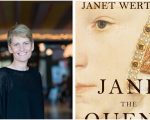
-
A Tudor gem that made me dance by Janet Wertman

-
The Tudors and ear piercing
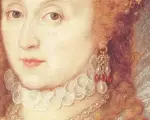
Thank you so much for Tudor Society member Lorna for inspiring today’s Claire Chats video. In today’s talk, I look at when ear piercing became fashionable in the Tudor period, the evidence we have on it and also ear piercing in men.
[Read More...] -
11 May 1532 – Henry VIII attacks the clergy
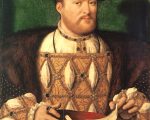
On this day in history, 11th May 1532, King Henry VIII sent for the Speaker and a delegation from the Commons and accused the clergy of being “scarce our subjects”, attacking their oath to the Pope.
Here is chronicler Edward Hall’s account of this:
[Read More...] -
Dr Thomas Wendy – King’s physician
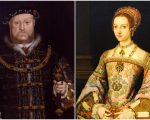
On this day in history, 11th May 1560, Dr Thomas Wendy, physician to Henry VIII and Queen Catherine Parr, died at Haslingfield in Cambridgeshire. He was sixty-one years old at his death.
Henry Machyn records in his diary that Dr Wendy was buried on 27th May at Cambridge:
“The xxvij day of May was the obseque and fen[eral] of master docthur Wende, fessyssyon [physician] at Cambryge, a penon of armes and a cott armur, and vj dosen and d’ [half] of skochyons of armes, and a harold of armes master Somersett, and . . morners in blake, and he gayff mony gownes to pore men, and ther was a grett dolle, and thether resortyd xx m[iles] off vC. pepull and had grett plente of mett and drynke, boyth hosses [houses] and barnes and feldes, grett store as has bene [seen] for a men [mean] gentyllman, and gret mone mad [moan made].”
[Read More...] -
9 May 1509 – Henry VII’s remains taken to St Paul’s
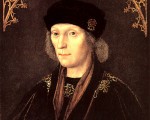
On this day in history, 9th May 1509, the remains of Henry VII, who had died at Richmond Palace on 21st April 1509, were taken to Old St Paul’s.
Here’s an account by James Peller Malcolm (1767-1815) in Londinium redivivum:-
“On the 9th of May, 1509, the body of Henry VII. was placed in a chariot, covered with black cloth of gold, which was drawn by five spirited horses, whose trappings were of black velvet, adorned with quishions of gold. The effigies of his Majesty lay upon the corpse, dressed in his regal habiliments. The carriage had suspended on it banners of arms, titles, and pedigrees. A number of prelates preceded the body, who were followed by the deceased king’s servants; after it were nine mourners. Six hundred men bearing torches surrounded the chariot.
[Read More...] -
This week in history 8 -14 May
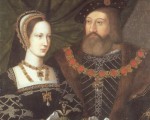
On this day in history…
8th May:
[Read More...]
1508 – Birth of Charles Wriothesley, herald and chronicler, in London. His chronicle is one of the major primary sources for Henry VIII’s reign. Charles came from a family of heralds; he was the younger son of Sir Thomas Wriothesley, Garter King of Arms, grandson of John Writhe, Garther King of Arms, and nephew of William Wriothesley, York Herald. Charles’ offices included Rouge Croix Pursuivant and Windsor Herald of Arms in Ordinary, but he did not go as far as his father and grandfather.
1538 – Death of Edward Fox, Bishop of Hereford and diplomat. He was active in trying to secure the annulment of Henry VIII’s marriage to Catherine of Aragon, and produced several books and polemics on Henry’s Great Matter, including Henricus octavus. -
Two newly attributed to Hilliard portraits and a special exhibition
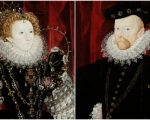
Thank you so much to Waddeson Manor for sharing this news with us. There will be details and images in the June edition of Tudor Life magazine, but I wanted to alert you to this exciting news and give you advance warning of this special tour and exhibition at Waddesdon Manor in Buckinghamshire.
[Read More...] -
Transcript from Gareth Russell’s Live Chat

-
1559 Act of Uniformity
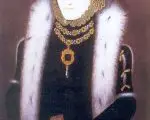
On this day in history, 8th May 1559, Queen Elizabeth I gave her approval to the Acts of Uniformity and Supremacy which had been passed by Parliament on the 29th April. The Act of Uniformity made Protestantism England’s official faith, established a form of worship which is still followed in English Parish churches today and showed the country that Elizabeth was bent on following a middle road where religion was concerned. The monarch was Head of the Church again, and still is today.
[Read More...] -
May Crossword Puzzle

This week’s Sunday quiz is a May crossword puzzle, i.e. the clues are all to do with historical events that took place in the month of May. All the events appear somewhere on the site, in articles and “This week in history” posts, so get searching!
[Read More...] -
The Coverdale Bible
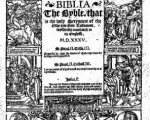
On this day in history, 6th May 1541, Henry VIII issued an injunction ordering “the Byble of the largest and greatest volume, to be had in every churche”. The Bible referred to was “The Great Bible” or “Coverdale Bible”, the first authorised Bible in English. It had been prepared by Miles Coverdale and was based on William Tyndale’s New Testament and Pentateuch, and then Coverdale’s own translations of the other books of the Bible.
[Read More...] -
A contemporary image of Anne Boleyn

This week’s Claire Chats video has been inspired by a debate that’s been happening online over an image from The Black Book of the Garter which Roland Hui believes to be of Anne Boleyn.
[Read More...] -
Reading and Research by Stephanie A. Mann

-
Margaret of York
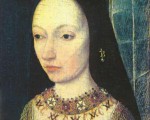
Thank you to Heather R. Darsie, our regular contributor, for writing this article on Margaret of York (1446-1503).
On 3 May 1446, Margaret of York, younger sister of the future Edward IV, was born. The fifth of seven children and the youngest daughter of Richard of York, 3rd Duke of York, and his wife, Cecily Neville, Margaret of York began her life at Fotheringhay Castle, Northamptonshire. Her youngest sibling and the youngest of the seven children, the future Richard III of England, was born at the same castle in 1452. Margaret lived an uneventful life until she was about nineteen years old, when the opportunity to become Duchess of Burgundy presented itself.
[Read More...] -
Thomas Tusser
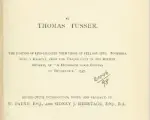
On this day in history, 3rd May 1580, Thomas Tusser, poet, farmer and writer on agriculture, died at the age of sixty-five. He was buried at Manningtree in Essex.
Tusser is known for his “A Hundreth Good Pointes of Husbandrie”, a poem recording the country year, and “Five Hundreth Points of Good Husbandry United to as many of Good Huswiferie”, an instructional poem on farming.
[Read More...] -
2 May 1550 – The burning of Joan Bocher, Joan of Kent
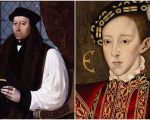
We don’t usually associate religious persecution with the reign of Edward VI, but people did suffer in his reign.
On this day in history, 2nd May 1550, Joan Bocher (Boucher, Butcher, Knel, Knell), an Anabaptist, was burnt at the stake at Smithfield. Bocher believed that Christ’s flesh was “not incarnate of the Virgin Mary” and so she was convicted of heresy and condemned to death.
[Read More...] -
Rioghnach O’Geraghty will be at the Gumeracha Medieval Fair
-
William Camden’s works
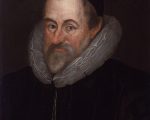
On this day in history, 2nd May 1551, William Camden, the Tudor historian, headmaster and herald, was born at the Old Bailey, London.
[Read More...] -
This week in history 1 – 7 May
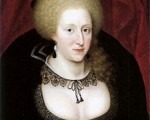
On this day in history…
1st May:
[Read More...]
1461 – Execution of James Butler, 1st Earl of Wiltshire and 5th Earl of Ormond, at Newcastle after being captured by the Yorkists.
1508 – Birth of Sir William Cavendish, administrator. Cavendish was one of Cromwell’s main agents in the dissolution of the monasteries and was appointed Treasurer of the Chamber in February 1546.
1517 – The Evil May Day Riot. A mob of young apprentices and labourers gathered at St Paul’s and then went on a rampage through the streets of London, causing damage to property and hurting those who stood in their way. -
Maypoles and rioting
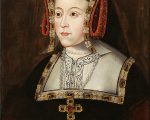
1st May is May Day, a day to celebrate the start of summer and you can read more about how it was celebrated and see a video of Maypole dancing in my article “May Day”.
However, it wasn’t always a day of fun and dancing, in 1517 there was a riot.
[Read More...] -
Expert Talk – Michelle Enzinas on Henry Buttes
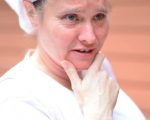
This month we have a wonderful talk from Michelle Enzinas, author of the “Big Buttes Book”. In 1599 Henry Buttes wrote a slightly comical cookbook for the Bacon family, in order to raise funds for the construction of a church. In this talk, we learn all about the book, and also whether it was successful in the end!
[Read More...] -
30 April 1532 – The burning of James Bainham, Protestant martyr
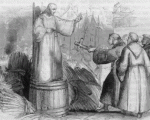
On this day in history, 30th April 1532, in the reign of King Henry VIII, lawyer James Bainham was burned at Smithfield.
Bainham was married to the widow of reformer Simon Fish, a man who had also been charged with heresy…
[Read More...] -
This week’s quiz
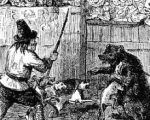
This week’s quiz is a general Tudor history quiz and is the perfect way to start your Sunday. Good luck and have fun!
[Read More...] -
Wimpole History Festival 7-9 July 2017

Thank you to Teri Fitzgerald for letting me know about this history festival which is taking place from 7th to 9th July 2017 on the Wimpole Estate near Cambridge, in the UK, and has been organised by the Cambridge Literary Festival and the National Trust.
[Read More...] -
Tudor dogs

In this week’s Claire Chats, Claire talks about the breeds and categories of dogs that were common in Tudor times.
[Read More...] -
28 April 1603 – The funeral of Queen Elizabeth I
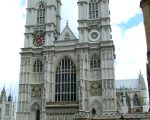
On 28th April 1603, Queen Elizabeth I’s funeral took place in London.
After her death on 24th March 1603, the body of Queen Elizabeth I was placed inside a lead coffin and carried by night in a torchlit barge along the Thames from Richmond Palace to Whitehall.
[Read More...] -
May 2017 Tudor Life Magazine

Here’s the full edition of our giant 90-page May edition of Tudor Life Magazine. It’s a macabre subject this month … DEATH.
[Read More...] -
St Mark’s Day
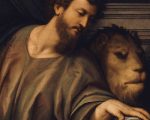
25th April is the feast day of St Mark the Evangelist, one of the apostles and the man said to have written the Gospel of Mark. He is known as the founder of Christianity in Alexandria, where a church was founded in his name, and as the founder of the Coptic Orthodox Church. As a result of his Christian work in Alexandria and his attacks on the worship of idols, at Easter 68AD he was dragged through the city by a rope around his neck before being imprisoned, where he is said to have had visions assuring him of eternal life. The next day he was dragged until his head parted from his body. Some say he was tied to a horse’s tail.
[Read More...] -
A Mask of Almains, Pilgrims and Irishmen for Mary I and Philip of Spain
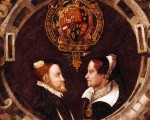
-
Thomas Vaux, 2nd Baron Vaux
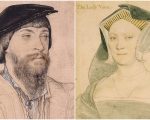
On this day in history, 25th April 1509, the poet Thomas Vaux, 2nd Baron Vaux, was born. He was a son of courtier and soldier Nicholas Vaux, 1st Baron Vaux of Harrowden, and his wife Anne Green.
Thomas Vaux was just fourteen when he married Elizabeth Cheyne, daughter of Sir Thomas Cheyne and Anne Parr, in 1523. The couple went on to have four children, two sons and two daughters.
Nothing is known of his early life and education, but in 1527 he went to France as part of Cardinal Wolsey’s retinue, in 1529 he sat in Parliament and in 1532 he was part of Henry VIII and Anne Boleyn’s party when they travelled to Calais to meet Francis I. He was created a Knight of the Bath as part of the celebrations for Anne Boleyn’s coronation in 1533 and he held the office of Governor of Jersey from January to August 1536. His Oxford Dictionary of National Biography biographer, H. R. Woudhuysen, notes that he appears to have retired to his estates in Northamptonshire after this, probably because of his Catholic views.
[Read More...]

